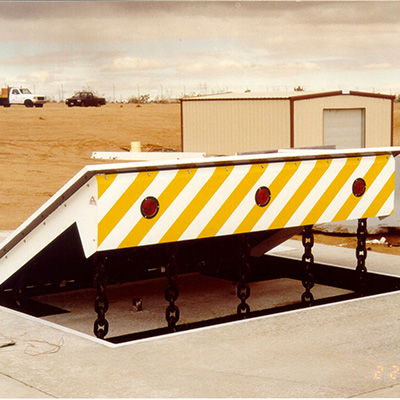Not known Facts About Wedge Barriers
Wiki Article
Wedge Barriers - Questions
Table of ContentsWhat Does Wedge Barriers Mean?How Wedge Barriers can Save You Time, Stress, and Money.

The Basic Principles Of Wedge Barriers
The staying force used to the cam web cam deploy release wedge plate 16 may might provided by an electromechanical actuator 84 or other actuator. The springtime assembly 54 and the actuator 84(e. Wedge Barriers. g., electromechanical actuator)might run with each other to equate the camera and raise the wedge plate 16.
As mentioned above, the spring setting up 54 puts in a continuous pressure on the web cam, while the electromechanical actuator might be controlled to exert a variable pressure on the cam, thereby allowing the training and decreasing( i. e., deploying and retracting )of the wedge plate 16. In specific embodiments, the consistent pressure applied by the spring setting up 54 might be flexible. g., electromechanical actuator) is disabled. As will be appreciated, the spring setting up 54 might be covered and protected from debris or various other components by a cover plate(e. g., cover plate 68 received FIG. 4) that might be considerably flush with the raised surface area 38 of the foundation 14. As discussed above, in the deployed placement, the wedge plate 16 offers to block accessibility or traveling past the barrier 10. The barrier 10(e. g., the wedge plate 16 )may block pedestrians or vehicles from accessing a home or pathway. As discussed over, the obstacle 10 is affixed to the anchor 30 safeguarded within the structure 14,

front braces 71. Because of this, the linkage assemblies 72 may pivot and turn to enable the collapse and expansion of the affiliation assemblies 72 during retraction and release of learn the facts here now the bather 10. The linkage assemblies 72 cause motion of the wedge plate 16 to be limited. For instance, if a car is traveling in the direction of the deployed wedge plate 16(e. For instance, in one condition, the safety legs 86 may be prolonged throughoutmaintenance of the barrier 10. When the safety legs 86 are released, the safety legs 86 sustain the weight of the wedge plate 16 against the surface area 12. Consequently, the training mechanism 50 may be shut off, serviced, gotten rid of, replaced, and so forth. FIG. 5 is partial viewpoint sight of an embodiment of the surface-mounted wedge-style barrier 10, illustrating the web cam 80 and the web cam surface areas 82 of the training device 50. Specifically, two cam surface areas 82, which are referred to as reduced web cam surfaces 83, are placed listed below the camera 80. The reduced webcam surface areas 83 may be taken care of to the surface area 12 (e. As an visite site example, the reduced cam surface areas 83 and the placing plate 85 might form a solitary item that is safeguarded to the anchor 30 by bolts or other mechanical fasteners. In addition, two web cam surface areas 82, which are referred to as upper camera surface areas 87, are positioned over look these up the webcam 80 and combined to (e. In other personifications, interfering layers or plates might be positioned in between the surface 12 and the reduced camera surfaces 83 and/or the wedge plate 16 and the upper web cam surfaces 87 As mentioned above, the webcam 80 equates along the cam surface areas 82 when the wedge plate 16 is lifted from the pulled back setting to the deployed setting. Furthermore, as mentioned over, the spring setting up 54 (see FIG. 3 )may supply a pressure acting upon the webcam 80 in the instructions 102 by means of springtime pole 58, which might minimize the pressure the electromechanical actuator 84 is called for to put on the camera 80 in order to actuate and raise the wedge plate 16. 1 )to the deployed setting(see FIG. 4). As revealed, the camera 80 includes track wheels 104(e. g., rollers), which call and convert along the camera surface areas 82 during operation.
Report this wiki page